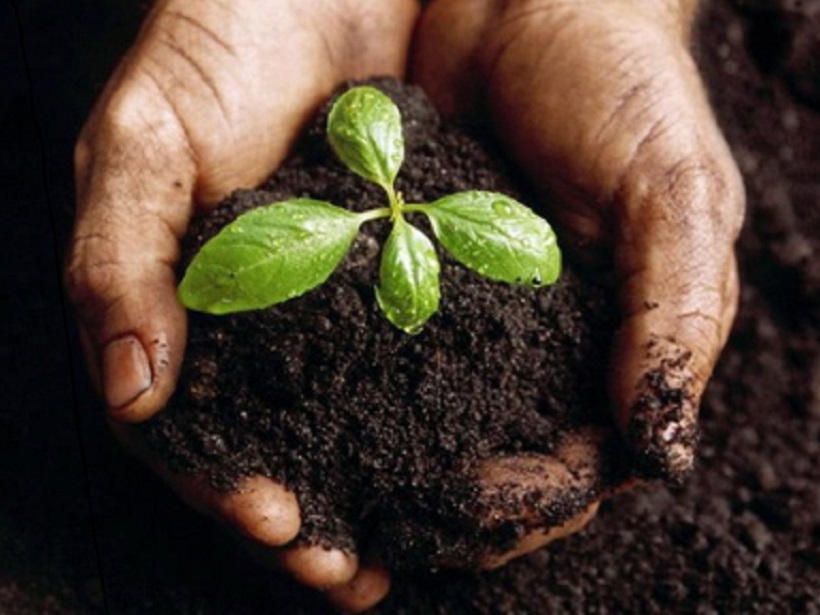Soil is a very important feature of the Earth’s surface, essential for the vitality of ecosystems and for supporting life. It is also a very active interface, a porous layer between the solid ground below and the air above that allows both water and gases to pass through. Thus, understanding the key properties of soils and how those influence different processes is an important science. In an article recently published in Reviews in Geophysics, Van Looy et al. [2017] gave an overview of pedotransfer functions, a tool used to represent soils in Earth system modeling. The editor asked two of the authors to explain more about pedotransfer functions, their applications, and recent developments in this field.
What are “pedotransfer functions”?

Pedotransfer functions (PTF) are used to translate soil data that we have into data that we need but which are not available; in other words, they are a kind of tool to convert proxy measures. Some PTFs are simple while others are very complex.
The concept of PTFs was developed by Johan Bouma and Henny van Lanen in the 1980s. Some of the first applications used survey data on soil texture and structure to estimate the water holding capacity of soil.
Since then, difficult-to-measure soil properties, such as the water retention curve and hydraulic conductivity, have received the most comprehensive research in developing PTFs.
How are pedotransfer functions applied in theory and practice?
Most processes describing exchange processes at the Earth’s surface, can benefit from using the knowledge and data on soils through PTFs. PTFs provide the key soil properties and functions that are needed to operate soil water balance models, hydrological and ecological models, crop growth models, and land surface models. Traditionally, PTFs have been mostly applied in land management, but more recently have been applied to large-scale crop modeling and Earth system modeling. Recent developments in this field include parameterizations of solute transport, heat exchange, soil respiration and organic carbon content, root density and vegetation water uptake.
What are some of the challenges of applying pedotransfer functions in different locations?
PTFs should encompass the variability of the estimated soil property or process in such a way that the estimation of parameters allows for validation and can also confidently provide for extrapolation and upscaling purposes capturing the spatial variation in soils. Novel sensing techniques provide a true breakthrough for this, like new satellite information on soil humidity, providing ample data for development and validation of PTFs, together with improved modeling and spatial inference techniques such as geographically weighted regressions allowing for local-based inferences as shown for active layer thickness in Alaskan permafrost region. Further improvements are necessary for methods to deal with uncertainty and to validate applications at global scale.
How are pedotransfer functions used in different disciplines within Earth system science?
PTFs are used across Earth system sciences including applications in water flow, solute transport, root water uptake, heat exchange, and carbon and nutrient cycling processes. Further challenges are addressed in parameterization of vegetation water content, biotic processes, soil erosivity, and land use change impacts at multiple scales. In our review article, we give some examples of high resolution global application of pedotransfer functions in land surface models to highlight the strong potential of soil information for improved Earth system processes inference over large scales. We argue that a comprehensive set of PTFs can be applied throughout a wide range of disciplines of Earth system science, with emphasis on land surface models.

What are the some of the remaining methodological challenges?
Ways of improving the development and application of PTFs in Earth system science need to focus the identification, validation and integration of relationships between soil properties, states and process parameters. There are still many unknowns; for example, relating biotic processes and parameters to soil properties.
For validation of larger scale applications, nowadays there is a strong focus on estimations of preferential flow and carbon stocks. For integration, the linkages between hydraulic and biogeochemical parameters are particularly ripe for further investigation. However, in addition to methodological improvements, there needs to be experimental studies to derive PTFs for complex models such as solute transport including biotic adsorption, or boundary layer heat exchange processes.
Finally, most of the PTFs developed until now assume that predictors remain constant in time. Our review also describes the first attempts towards developing time-dependent PTFs which include time dependent predictor variables.
—Kris Van Looy and Harry Vereecken, Institute of Bio and Geosciences, Forschungszentrum Jülich, Germany; email: [email protected]
Citation:
Van Looy, K.,Vereecken, H. (2018), Pedotransfer functions bring new life to Earth system modeling, Eos, 99, https://doi.org/10.1029/2018EO089581. Published on 19 January 2018.
Text © 2018. The authors. CC BY-NC-ND 3.0
Except where otherwise noted, images are subject to copyright. Any reuse without express permission from the copyright owner is prohibited.

